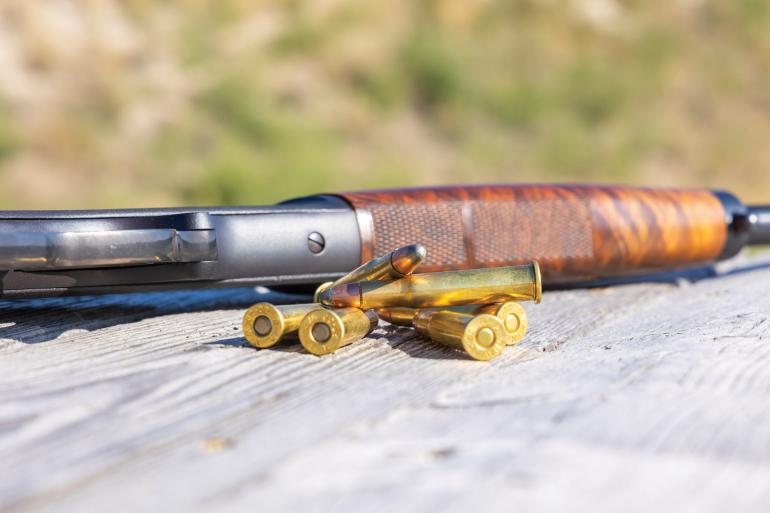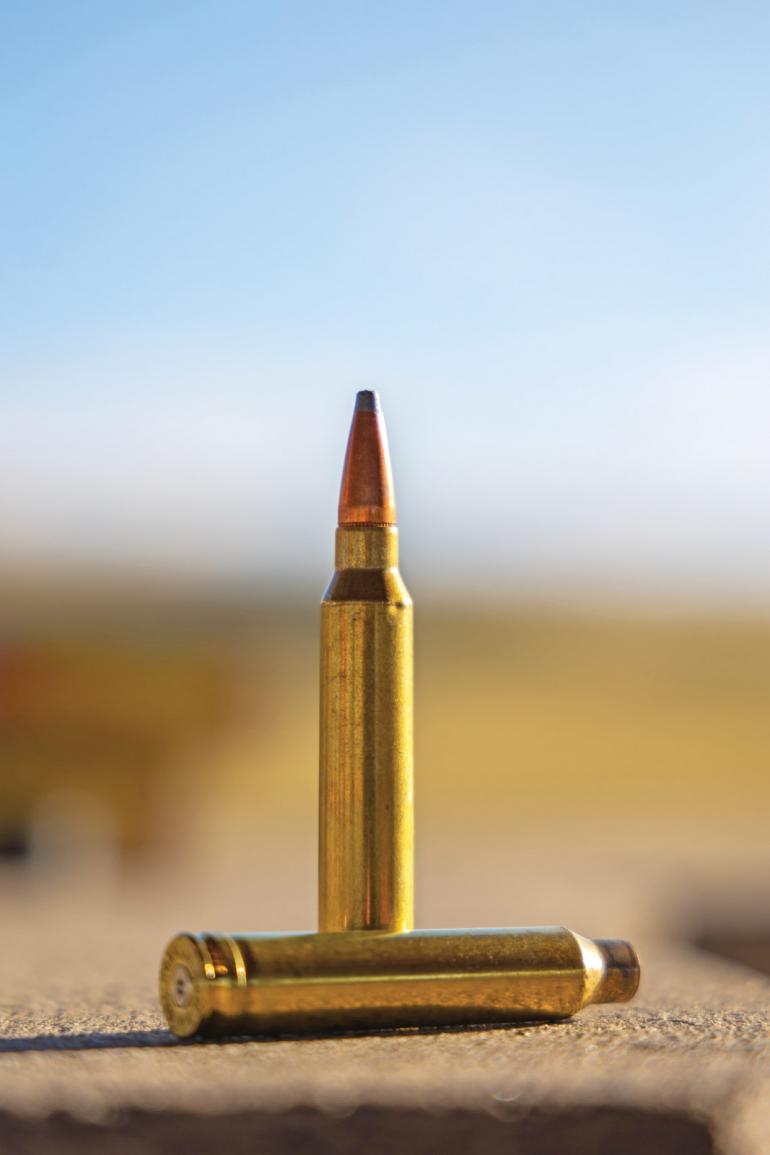Rifle Do Ya
Understanding the big-game hunter's bread-and-butter firearm.
Outside of familiarizing oneself with all the rules and regulations, picking a rifle can be one of the most difficult parts of the hunting process. Here’s a handful of things to consider, whether scrolling forums or chatting with buddies at the bar.
Anatomy
There are three basic parts to a rifle: stock, action, and barrel. Most modern stocks are made of some sort of composite (carbon fiber or plastic), and older models will be wood. Keeping in mind that composite materials are generally lighter than wood, the important part here is to find a stock with a comfortable cheek weld—the area your face presses against when you shoot. When it comes to actions, most are going to be either bolt or lever (those ones cowboys used back in the day). Bolt-actions are most popular throughout the hunting world, but both are reputable. You’ll find barrels made of iron, steel, or carbon fiber. Look for one 16-22 inches in length.
Caliber
Perhaps one of the most important questions to consider is what you want your rifle to do for you. Generally, folks are interested in a middle-of-the-road, do-it-all caliber to make sure all their bases are covered. While that’s good reasoning, if you don’t plan to hunt elk or moose (or you’re concerned about recoil), there’s no reason to go heavy when a lighter caliber will do the job just fine. You’ll save weight, money, and shoulder pain. For deer and antelope, a .243 or 6mm with a 100-grain bullet is all you need. If you’re planning to make elk hunting part of your annual tradition, look for something in the 30-caliber range with some knockdown power. Reliable calibers are the .30-06, .308, and 300 Win. Mag. with 160- to 180-grain bullets. For those who can only afford one rifle and want to make it versatile, I recommend a .270 with anywhere from 120-150 grain bullets.
Weight
Ounces make pounds, and pounds make pain. Given that rifle hunting in Montana often involves putting a lot of miles on your feet, with a lot of elevation gain to boot, this adage applies. That said, heavier rifles reduce recoil and are generally a bit more accurate. Something in the six- to eight-pound range will provide a good balance between comfort and performance.
Cost
As with all things, the more you put down, the more you’re gonna get. However, you should be able to find a quality hunting rifle in Montana for around $500. This doesn’t count the scope, mind you, which could very well become a big-time factor. Read on.
Optics
For hunting the wide-open West, a good scope is dang-near imperative. While fixed-magnification optics might be able to get it done in thick timber (as can open sights on a lever-action—after lots of time at the range), variable-power scopes give you the ability to zoom in and out depending on how far your target is. A few of the most popular ranges are the 3-9x, 4-12x, and 3-15x. For an objective lens (i.e., how much light the scope lets in), 40mm is a great width for all-around hunters. Lots of modern-day scopes come with additional features such as elevation “turrets” which allow you to custom-dial your scope to specific ranges, taking a lot of the guessing out of it. However, be mindful—a brand-spankin’-new scope doesn’t guarantee accurate shots. Practice does.
Other Considerations
A final piece to think about is actually shooting the gun. Rifles will offer either a two-position or three-position safety. Two-position is straightforward: safe and fire. The three-position offers a third placement in which the bolt can be opened but the trigger can’t be fired. Speaking of triggers, make sure to investigate its pull. A heavier trigger responds much differently than a lighter one, and it’s worth feeling it before you buy. If you’re in a gun store, ask the worker if you can dry fire the rifle to see what it’s like. A long, hard trigger pull might cause you to shank the shot. On the other hand, a feather-trigger could result in an accidental discharge. Find a happy medium, if you can.
The main principle in all this is finding something you can shoulder for long periods of time, and that is still comfortable to shoot after a few rounds have been sent downrange. Once you decide to buy, take care of the gun throughout its life, and it’ll take care of you.














